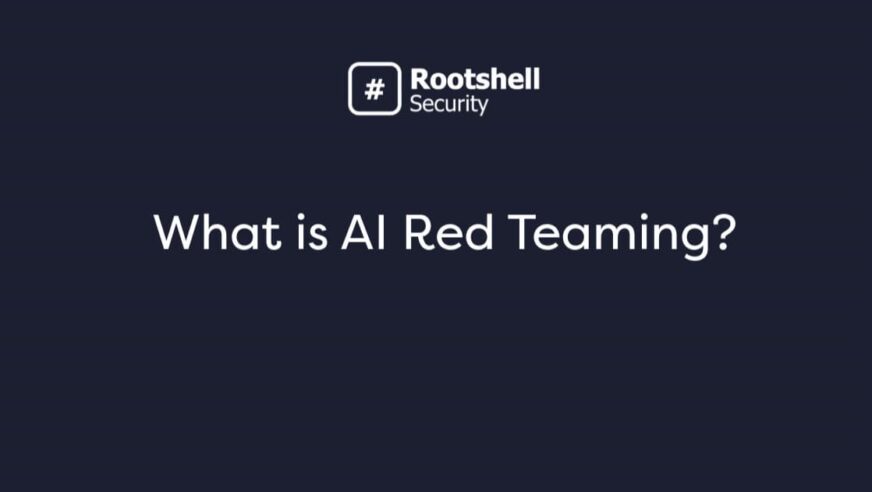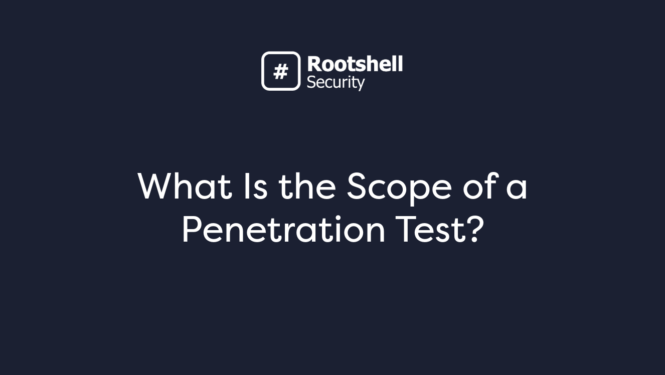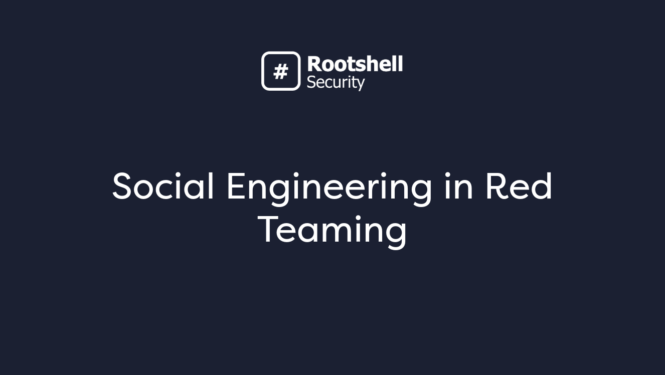Key Takeaways:
- AI red teaming tests models from an adversarial perspective to uncover risks, biases, and misuse scenarios.
- It goes beyond traditional QA by focusing on safety, fairness, and real-world attack simulations.
- organizations benefit through stronger safety policies, regulatory readiness, and more trustworthy AI.
- Leading developers like OpenAI, Anthropic, Microsoft, and Meta now use red teaming as a core safety practice.
Artificial intelligence in any setting raises questions of safety, fairness, and accountability. Traditional testing methods are no longer enough to find the unpredictable ways AI models can behave under pressure, misuse, or manipulation. That’s where AI red teaming comes in.
AI red teaming takes an offensive approach to put systems under pressure, exposing weaknesses and risks that traditional testing may overlook. By recreating realistic attacks and potential misuse, organizations can identify how models could break down and take action to make them more resilient.
This guide explores what AI red teaming is, how it works, why it matters, and the role it plays in building safer, more trustworthy AI.
What is AI Red Teaming?
AI red teaming is a security practice that involves testing artificial intelligence systems by adopting the mindset of an adversary. The goal is to identify weaknesses, biases, and safety risks within AI models before they can be exploited or cause harm in real-world use.
Unlike traditional software systems, AI models can behave unpredictably. They learn from data, adapt over time, and can be influenced in ways developers may not anticipate.
In this context, an AI red team simulates realistic attacks and misuse scenarios. These can include prompt injection, data poisoning, or attempts to get the model to produce unsafe or confidential outputs. The team may also test social engineering angles or the system’s resistance to misinformation.
Benefits of AI Red Teaming
organizations building AI systems face a range of risks. Security, trustworthiness, fairness, and accountability are all under scrutiny from users, regulators, and internal stakeholders. AI red teaming helps find hidden threats early and supports safer deployment.
Some of the direct benefits include:
Exposing Unintended Behaviours:
Red team exercises highlight situations where models respond in ways that contradict their intended use, particularly when prompted creatively or maliciously.
Improving Safety Policies:
Red teaming results can feed into policy updates for model output filtering, prompt moderation, or content refusal strategies.
Supporting Regulatory Readiness:
With attention from government bodies, red teaming contributes to risk assessments and documentation needed for AI audits and certifications.
Encouraging Different Perspectives:
AI red team members often include people from varied backgrounds. This helps test a wider range of cultural, ethical, and situational risks than standard testing might reveal.
Red Team vs Penetration Testing vs Vulnerability Assessment
Though related, red teaming, penetration testing, and vulnerability assessments serve different purposes in security.
Activity | Purpose | Scope | Approach |
Red Teaming | Tests real-world tactics and uncovers unknown risks | Broad and open-ended | Adversarial simulation |
Penetration Testing | Exploit known vulnerabilities in a controlled way | Defined systems and apps | Tool-based and manual testing |
Vulnerability Assessment | Identify and report system flaws without exploiting them | Infrastructure and applications | Automated scanning and analysis |
In the AI context, red teaming includes elements of all three approaches, but it is more creative and less predictable. Instead of scanning code or ports, it may involve crafting inputs to confuse a language model or mislead a facial recognition system. The focus is not just on access or data exposure, but also on ethical risks, misinformation, bias, and manipulation.
Use Cases for AI Red Teaming
AI red teaming can be applied in a wide range of scenarios across industries and model types. Some typical use cases include:
- Large Language Models (LLMs): Testing whether a chatbot can be manipulated into giving harmful, false, or inappropriate responses.
- Recommendation Engines: Checking for algorithmic bias that favours or excludes particular groups based on protected characteristics.
- Image Generation Tools: Identifying whether visual content tools create harmful stereotypes or reproduce private or copyrighted content.
- Autonomous Vehicles: Exploring how edge-case inputs, road signs, or unexpected behaviour could confuse decision-making systems.
- Financial Models: Looking at how fraudsters might game an AI-driven credit scoring or transaction monitoring tool.
- Healthcare AI: Testing models for diagnostic fairness, incorrect results under specific conditions, or exploitation of edge cases.
AI Red Teaming Process
While red teaming can be adapted to suit each project, the process typically follows these broad stages:
1. Goal Definition
The first step is deciding what you want to test. This could be safety, fairness, security, bias, or misuse resistance. Clear objectives help frame the types of attacks or scenarios the red team will explore.
2. Team Formation
An AI red team is often multidisciplinary. It may include cybersecurity experts, ethicists, sociologists, domain specialists, and people with experience in social engineering or offensive tactics. Importantly, it should include voices not usually involved in development to spot blind spots.
3. Model Familiarisation
The team studies the model’s purpose, its training data, its intended outputs, and its limits. In some cases, this involves looking at public-facing endpoints, APIs, documentation, or model cards.
4. Adversarial Testing
This is the core of the red teaming process. The team attempts to break or manipulate the model using:
- Prompt injection
- Jailbreaking techniques
- Data poisoning
- Model inversion
- Bias-triggering prompts
- Adversarial inputs
5. Logging and Analysis
All activities and outcomes are documented, with a focus on behaviours that indicate risk or unexpected responses. The team classifies risks based on severity and likelihood.
6. Feedback and Recommendations
Findings are shared with the development and policy teams. Suggestions may relate to model retraining, prompt filtering, deployment policies, or external safeguards.
7. Re-testing
Red teaming is not a one-off task. As models change and grow, so do the threats. Periodic red team assessments support long-term risk reduction.
AI Teaming Methodologies
AI teaming methodologies are the structured approaches that define how humans and AI systems collaborate to achieve shared objectives.
Unlike traditional automation, which replaces human effort, AI teaming puts emphasis on partnership, using the strengths of both humans (judgment, creativity, ethics) and AI (speed, scale, precision).
Methodologies can vary depending on the domain, level of autonomy, and organizational needs, but they generally include the following approaches:
Human-in-the-Loop
Humans remain decision-makers while AI provides recommendations, predictions, or alerts. Useful in high-stakes domains (e.g., medicine, defence, finance) where ethical or safety considerations require human oversight.
Human-on-the-Loop
AI operates with a higher level of autonomy, but humans supervise and can intervene when necessary. This approach balances productivity with accountability, often seen in semi-autonomous systems like drones or industrial control systems.
Adaptive Autonomy
The level of AI autonomy shifts depending on context, performance, or risk. For example, an AI assistant in healthcare may automate routine diagnostics but escalate complex cases to clinicians.
Collaborative Co-Creation
Humans and AI work iteratively, each contributing unique capabilities to problem-solving or design. Common in creative fields where AI augments human ideation.
Swarm and Collective Intelligence Teaming
Multiple AI agents collaborate with human teams, either coordinating among themselves or integrating into human-led teams.
Real Life Examples of AI Red Teaming
Many major AI developers have publicly acknowledged the role of red teaming in building safer systems.
OpenAI
OpenAI has used red teams to test models like GPT-4. These testers attempted to prompt harmful, misleading, or biased responses. The feedback helped develop better output moderation and refusal behaviours.
Anthropic
Anthropic, developer of Claude, built red teaming into its safety research strategy. It collaborated with external researchers to simulate misuse scenarios and evaluate the safety of model outputs under different conditions.
Microsoft
Microsoft integrated red teaming as part of its Responsible AI programme. Its teams simulate abuse scenarios, security threats, and social harms across its suite of AI tools, from Azure models to Copilot systems.
Meta
Meta’s AI research division has conducted red teaming exercises to explore bias and misinformation in its large language and image generation models. Findings have helped guide release strategies and transparency updates.
With regulations on the rise and AI systems playing a bigger role in decision-making, building red teaming into your processes is a practical way to build safer, more trustworthy models. Red teaming helps you understand what could go wrong before it does.
AI Red Teaming Tools
The table below presents red teaming tools, outlining their features and typical use cases.
Tool | Overview | Use Case |
Mindgard | A full-featured platform for conducting AI red teaming across the entire AI development lifecycle. | Evaluates AI systems’ security and performs automated red team simulations. |
Garak | An AI-focused security tool designed to find vulnerabilities and perform penetration testing. | Scale automated red teaming to identify weak points in AI models. |
PyRIT | A tool for challenging machine learning models using carefully crafted adversarial inputs. | Tests model resilience against attacks. |
AI Fairness 360 | A framework for detecting, measuring, and reducing bias in AI algorithms. | Ensures fairness and reduces discriminatory outcomes in AI systems. |
Foolbox | A library for generating adversarial examples targeting a variety of machine learning models. | Stress-test models by creating inputs designed to expose vulnerabilities. |
Meerkat | A framework focused on evaluating adversarial robustness specifically in NLP models. | Assess NLP systems for susceptibility to adversarial manipulations. |
Challenges in AI Red Teaming
AI red teaming helps to find risks in AI systems, but it comes with its hurdles. These include inconsistent methodologies, complex models, limited expertise and the challenge of balancing safety with usability. Teams must work through multiple obstacles.
Lack of Standard Frameworks
A barrier to AI red teaming is the lack of consistent methodologies. Different organizations experiment with their processes, which makes results difficult to benchmark or compare.
Without shared standards, collaboration across industry is fragmented. Progress is being made through early guidance, but the field is still far from having universally accepted best practices.
Complexity of Models
Modern AI models, especially large language models and multimodal systems, operate with layers of complexity that make them difficult to probe. Identifying weaknesses requires deep expertise and creative testing approaches, making this a challenge for many companies.
Resource Intensity and Skills Gap
Red teaming AI is not only time-consuming but also requires specialised talent at the intersection of machine learning, security, and threat analysis. Automation can scale some aspects of adversarial testing; however, many vulnerabilities require human ingenuity to find.
Balancing Safety and Utility
Red teaming finds risks that demand tighter safeguards. However, over-restricting a system can reduce its usefulness for end users. Striking the right balance between robustness and usability is a recurring challenge, and one that must be approached carefully.
Choose Rootshell Security to Improve Your Cyber Performance
AI red teaming is important for ensuring the safe, ethical, and compliant deployment of generative AI and other AI systems within your organization. It is possible to conduct red team exercises in-house, but it requires the time and resources that your business may not have. That’s where Rootshell Security comes in, offering expert, specialised testing.
Book a demo by clicking the button below and find out how our red teaming services can help protect your AI systems.



